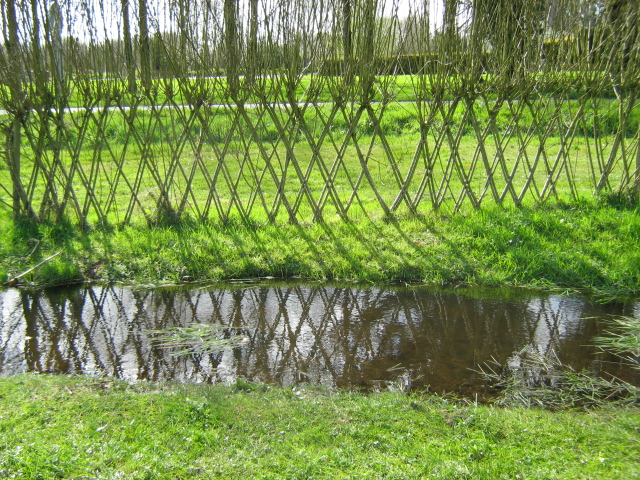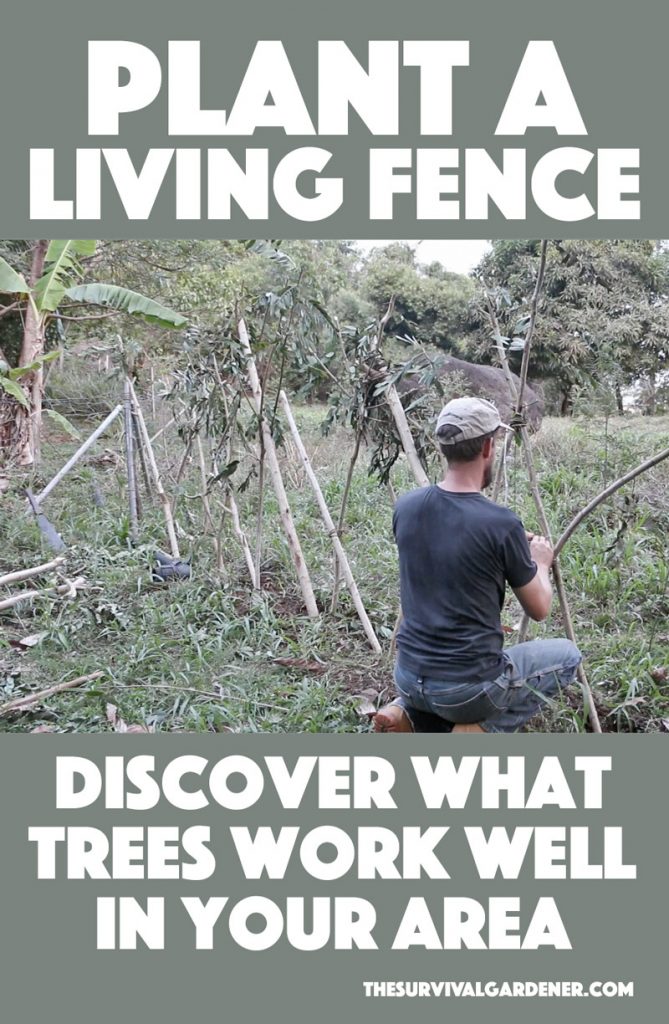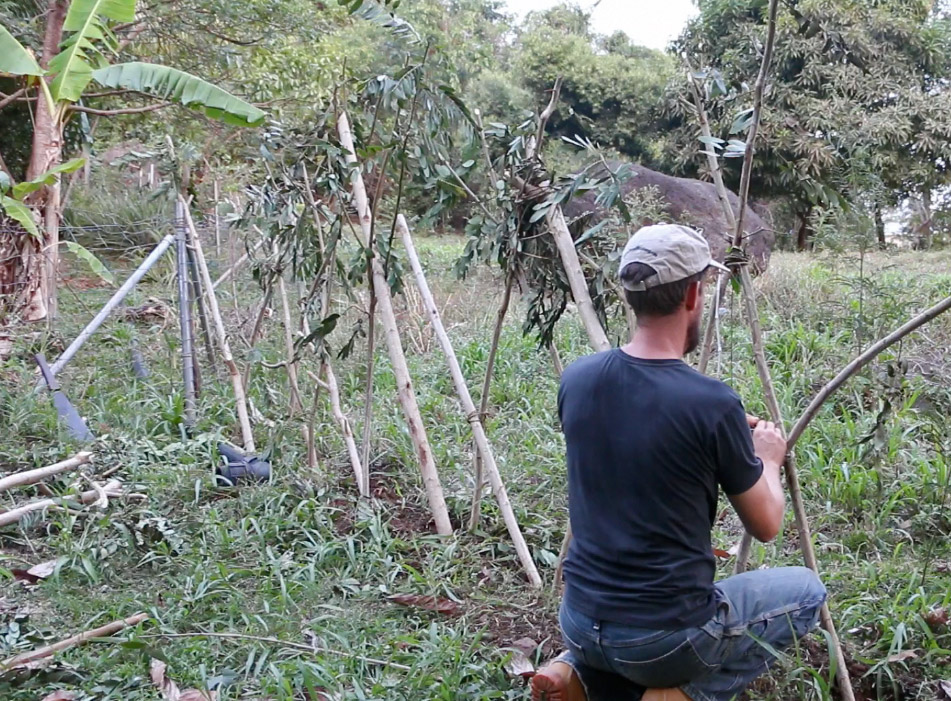This last week I demonstrating planting a living fence and posted the process on YouTube:
You can get the extended 21-minute mix of the Publix Song here, if you’re insane.
Since there were a lot of questions on this fence, I posted a follow-up video answering some of them:
I’m writing this article on half my normal caffeine dose, so if I make a mistake… blame the Lipton.
Species Options for Planting a Living Fence
For subtropical climates with little to no frosty weather, you could build a living fence with Gliricidia sepium, moringa, some aralia species, purple mombin or even governor plum.
Farther north you can do this with willow branches – especially in wet areas.

Living fences could also potentially be planted from the branches of species of mulberry, though I’ve had 0% success rooting mulberry by sticking branches in the ground.
If you don’t have any trees with branches that can be rammed in the ground to root, just plant almost any kind of tree seedlings in V shapes at 45-degree angles and tie them together at crossing points.
Dwarf apples, anyone?
There are a lot of possibilities for building a living fence. Interweaving the trees causes them to graft together over time and make an almost impenetrable barrier – even more so if you use a hard and thorny tree like osage orange!
As recounted over at Mother Earth News, “Easily propagated from seeds, cuttings, or sprouts from the roots, Osage orange is tolerant of a wide range of soils, resistant to drought, long-lived, and affected little by insects or disease. Planted at a spacing of 1 foot, in four years it makes a fence that is “horse-high, bull-strong, and hog-tight.”
Osage orange is also one of the best woods for tool handles and bows. Bonus!
From the same article:
“Other thorny species that could be used to make living fences are pyracanthas, jujube, hollies, black locust (also fixes nitrogen), honey locust (which has high-protein seeds and pods for livestock and people), prickly ash, and rugosa rose (which has vitamin C-rich fruits, or “hips”).”
Other Side Benefits of Living Fences
Beyond just keeping out wandering livestock and nosy neighbors, living fences have some serious advantages.
Let’s run through a few!
1. A Living Fence is Free
Unless you buy seedlings to plant, you can start a living fence for free. In my case, all I had to do was cut some Gliricidia branches and plant them. As for potted trees or shrubs, you can start your own. I always keep a little plant nursery going with a lot of bits and pieces in it. Maybe a multi-species living fence would work? Imagine that! Bougainvillea, noni trees, purple mombin, alternating with nitrogen fixers… crazy! A 2D food forest!
Oh man. I need to try that.
But the point is: free. Free is good.
2. A Living Fence Produces for You
A wire or wood fence is just a barrier, but a living fence is more than that. It’s a living, productive line of trees.
The top can be cut and fed to livesotck or used as a green layer in compost. You can also let it grow taller and make the trimmings into plant stakes. Or charcoal/biochar.
Not bad, eh?
3. A Living Fence Supports Other Species
If your living fence is a nitrogen-fixing species, it will feed the plants alongside it.
A living fence can also serve as a trellis for yams and other species as well as a home for birds, beneficial insects and lizards.
There are plenty of good reasons to plant a living fence and plenty of species that work almost no matter where you live. Experiments like this living fence are fun and I look forward to seeing mine in a few months.
Enjoy this post? Pin it on Pinterest!
 *Willow living fence image via Rhian on Flickr. CC license.
*Willow living fence image via Rhian on Flickr. CC license.


5 comments
Hi David. I love your books and site! I learn so much from you. Could you make a living fence with bougainvillea? Thanks! Laura
Other species (not thorny) you can push into the ground in temperate climates to root are forsythia, poplar, and the weedy privet. It seems best success with these is in the early spring before they leaf out and when there is consistent moisture I suspect that is when mulberry would root too if you have had little success.
Another suggestion for a living fence is allow a one foot area grow with what ever it grows after a couple years start trimming both sides. In central TN it works great cause every thing is a weed here.
I now have a screen from the road and the road crew trims one side for free every year!
[…] problem is: one will root and grow into a beautiful living fence, the other will eventually […]
I had never thought about using Moringa as a living fence but that sure would be perfect where I live in Costa Rica and since I have an entire bag of Moringa seeds I could probably get some starts by germinating them myself. Loved your video but now I can’t get that song out of my head.
That is awesome – do it!
Comments are closed.